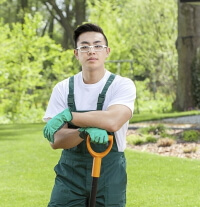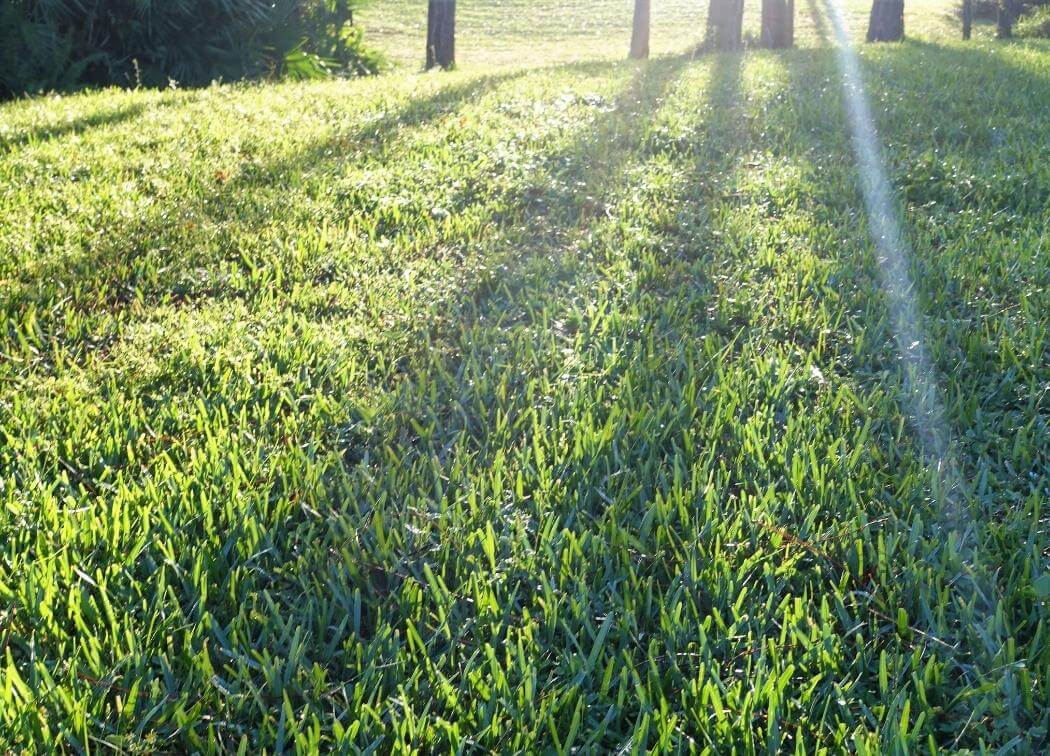Is your area FILLED with shades but do you still want to grow some grass? Are you trapped between tall buildings and tall trees that even direct sun is often rare to experience? The best way to counter this issue is to plant shade-tolerant grass!
The best shade tolerant grasses are St. Augustine Grass, Zoysia (warm-season grass), Ryegrass, tall fescue, and fine fescue (Cool-season grass).
Read more about these grass seeds and learn how to grow grass in the shade!
The Five Best Shade Tolerant Grass
When establishing a new lawn – be it using grass seed, sod, or even hydroseed – considering shady spots and sunlight conditions is ESSENTIAL in creating a lawn.
Grass grows well according to its composition and coverage!
Many types of grass grow WELL with direct sunlight, while others are great with shade and can thrive without too much sunlight.
If you plan to build a lawn with nearby trees and buildings, the shade will be a MAJOR FACTOR on how you adjust the grass to grow in it.
That being said, it is ESSENTIAL to know the sunlight requirements for different lawn grasses.
Do you want to know the best grass seed to plant with shade to consider? How can grass grow well in shady areas?
Here are the best shade-resistant grasses to grow on a lawn and how to grow grass under the shade!
1) St. Augustine Grass
St. Augustine grass is a warm-season grass that THRIVES in shaded lawns.
Because it is one of the many warm-season grasses, it excels well during the warm season!
While it does well in shady spots, it still needs some sunlight, although not as much as other grasses like Bermuda grass.
Cultivars of St. Augustine grass such as Floratam, Sapphire, Bitter Blue, Palmetto, and Seville are HIGHLY RESISTANT to shade.
Because of their excellent resistance to shade, all St. Augustine grass cultivars need 4-5 hours of direct sunlight, making them the BEST grass growing in partially low sunlight conditions!
In other words, St. Augustine grass seed grows in shade with partial sun daily!
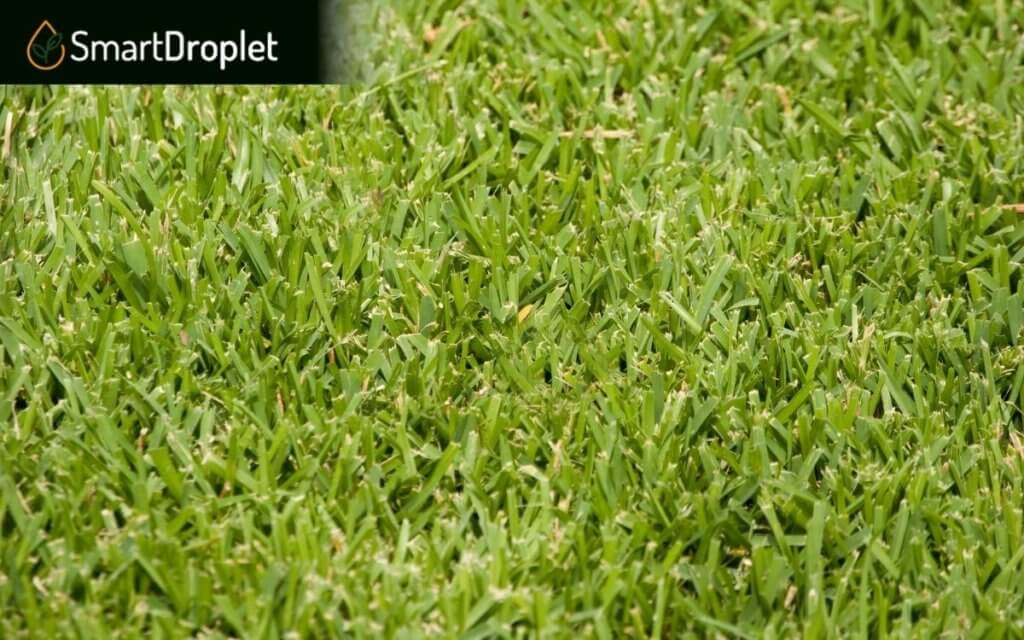
St. Augustine Grass Sunlight Requirements
Floratam is the MOST COMMON CULTIVAR of St. Augustine grass. However, the cultivar is not the most shade-tolerant type to grow for such adverse conditions.
In comparison to other cultivars, here’s how Floratam fares.
- Floratam requires at least 6-8 hours of direct sunlight to thrive and function properly.
- Palmetto, Seville, and Sapphire cultivars require at least 4-5 hours of direct sunlight daily.
Despite being shade tolerant cultivars, deprivation of light can show PROBLEMATIC symptoms – thinning, disease attack, and stunted growth, to name a few.
Many plants STRUGGLE to thrive under full and heavy shade, even the shade-tolerant species.
However, you can still improve the survivability of the St. Augustine grass in the shade by cutting the tree canopy above the existing lawn to allow sunlight to penetrate the canopy and give it to the plant!
2) Zoysia Grass
Although it still prefers to have partial sun daily, Zoysia Grass is a tremendous shade-tolerant species. It may be a shade-tolerant species, but it isn’t best to call it a shade-loving grass species.
The low-light tolerance shade properties of the Zoysia Grass are BETTER than the Bermuda grass seed.
Although both are great warm-season grasses, there has to be a winner between the two.
Even if the Bermuda grass is a great option, if you decide between Bermuda or Zoysia, the latter will tolerate shade better!
Subtropical areas like Florida are the BEST places for Zoysia.
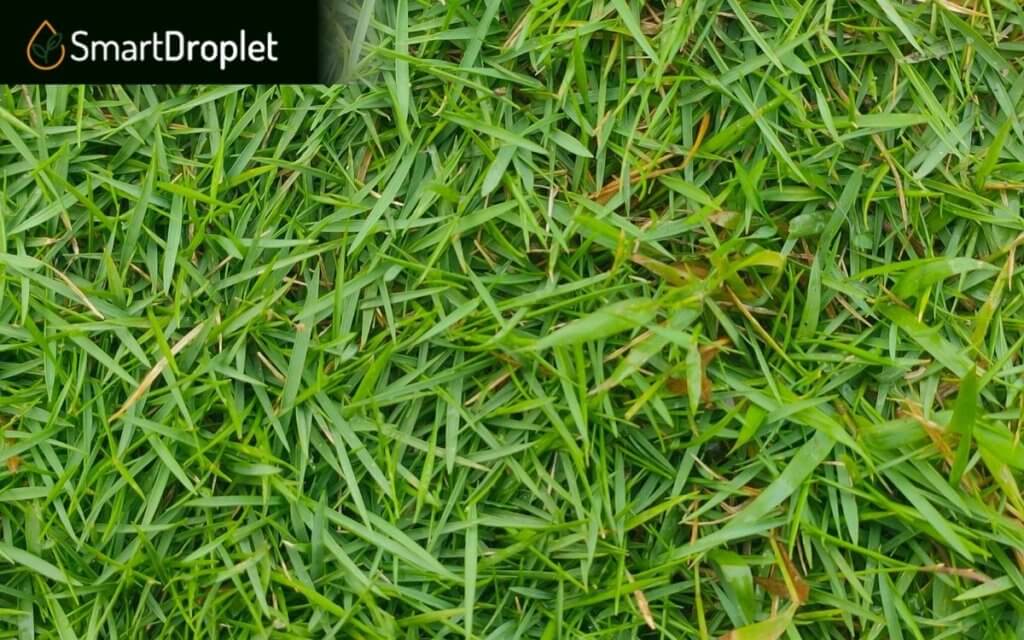
Zoysia Sunlight Requirements
The Zoysia is one of the best warm-season grasses that can grow in shade!
This warm-season grass requires at least 3-4 hours of direct sunlight to thrive fully.
Planting Zoysia for your lawn with PARTIAL SHADE, especially a lawn near tall buildings and nearby trees, is a great choice.
Grass experts HIGHLY RECOMMEND going for Zoysia with fine blades when going for amazing shade-tolerant turf grasses.
Zeon is the perfect example of a Zoysia variant with fine blades! You can usually find these growing grass types planted on golf courses and sports fields.
Another great Zoysia variant is Geo Zoysia. This grass seed produces a deep green turf that tolerates wear and foot stress.
Although cultivars like Emerald Zoysia are not as good as the other two cultivars mentioned, they are still good options to consider.
They are not to be chosen because of their slow grass growth rate, which can be affected by aggressive weeds.
3) Fescue
Fescue is a cool-season grass that can grow in shady areas but does not thrive in a place with a dense shade.
If you want cool-season grass that thrives well in shady areas, consider going for TALL FESCUE and planting that on your lawn!
Tall fescue is shade-tolerant and can grow well in drought and low-fertility regions.
It is worth noting that a fine fescue grass still requires full sun despite being shade-tolerant for optimum growth and coverage!
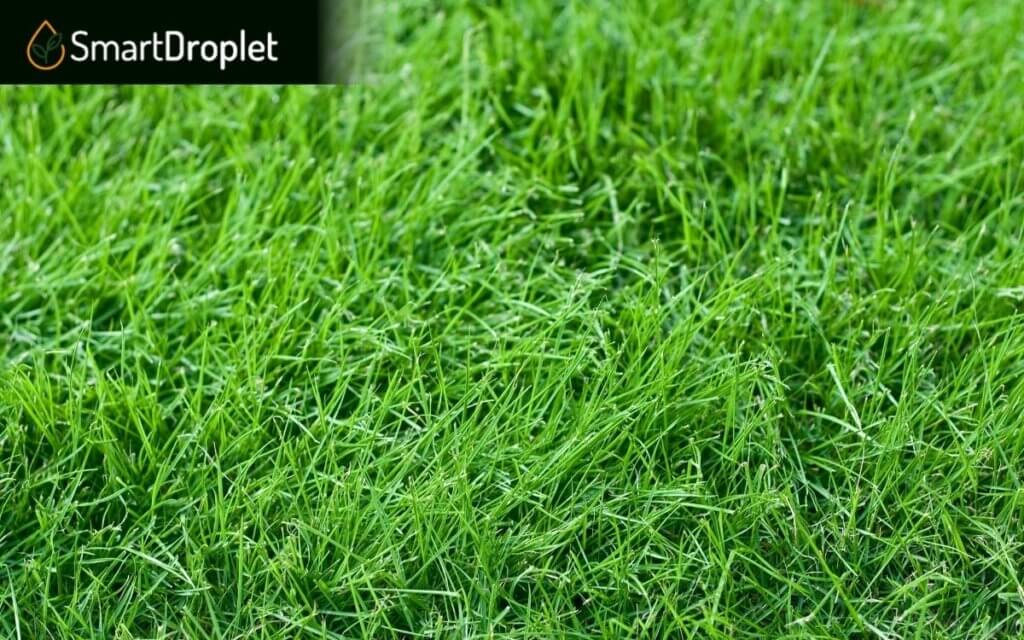
Fescue Sunlight Requirements
Despite having shade tolerance properties, Fescues require at least 4-6 hours of partial or dappled sun coverage for healthier growth.
Fescues receiving partial sun or dappled sun coverage is MUCH BETTER than it receiving direct sun due to their cool-season properties.
For the best maintenance and growth, ensure PROPER CARE for Fescue. Maintain the plant by mowing higher, watering the plant daily, and applying moderate nitrogen fertilizers.
These activities give the fescue a better chance of surviving low or dappled sunlight conditions.
If tall fescue is not a plant you want to grow but something similar to it, you can opt for red fescue, fine fescue, or Chewings fescue. All these options are good cool-season grasses.
Fescue is commonly grown in the central and northern United States. The fine blades of Fescue grass seed make it suitable for growing in shady areas.
4) Rye Grass
Ryegrass has many varieties that can either tolerate shaded areas or not. For this matter, MANY varieties can’t tolerate shady areas too well.
If you want the best ryegrass variety that can tolerate low light conditions, go for Perennial Ryegrass!
The Perennial Ryegrass does not REQUIRE to be placed under direct sunlight like other varieties, and it can tolerate dense shade well!
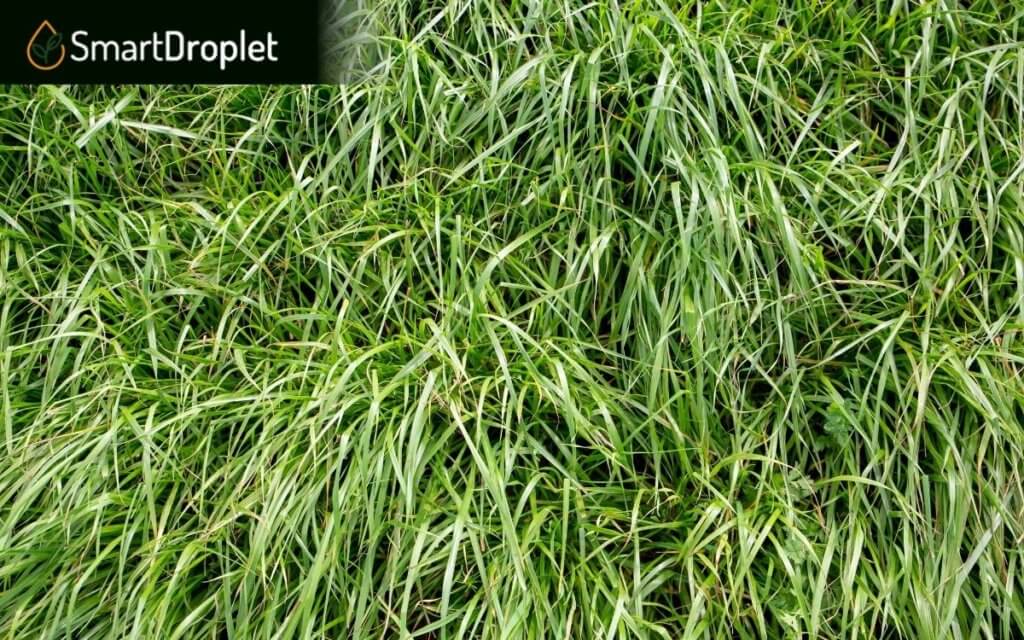
Rye Grass Perennial Sunlight Requirements
If you want ryegrass to fully grow and develop, follow the following requirements!
- Plant ryegrass if you plan on making your lawn receive at least 4-5 hours of direct sunlight
- Do NOT grow grass like ryegrass on shaded lawns or lawns with partial or dappled sun coverage, as the grass will not thrive and grow properly.
Since ryegrass is one of the many cool-season grasses in the industry, it prefers temperatures between 68 and 77 degrees Fahrenheit. Places like the upper great plains are great places to plant!
However, when more sunlight or even full sun is beaming into the environment, you will notice many ryegrass dying.
It is mainly due to ryegrass’ COOL-SEASON PROPERTIES. When the direct sun is beaming towards plants during the warm season, ryegrass cannot handle the high temperatures, causing its death.
Although it hates temperatures, the grass wants direct sun beaming towards it. The grass receiving partial sun or dappled sunlight will NOT grow properly!
5) Bluegrass
While there are many shade-tolerant cultivars for bluegrass, the variety to look out for under bluegrass is the rough bluegrass!
The Rough Bluegrass thrives well in shaded areas and wet and cool areas, making it a great option to plant during the cool season.
Due to those properties in the plant, keep in mind that it will NOT DO WELL under warm-season circumstances!
So if you plan on establishing a lawn under hot temperatures, you may as well forget about the bluegrass because it will die and leave brown patches.
If you do not want to leave bare soil and somehow decorate your lawn, a great way to do that is to cover those patches with natural materials like wood chips and rocks.
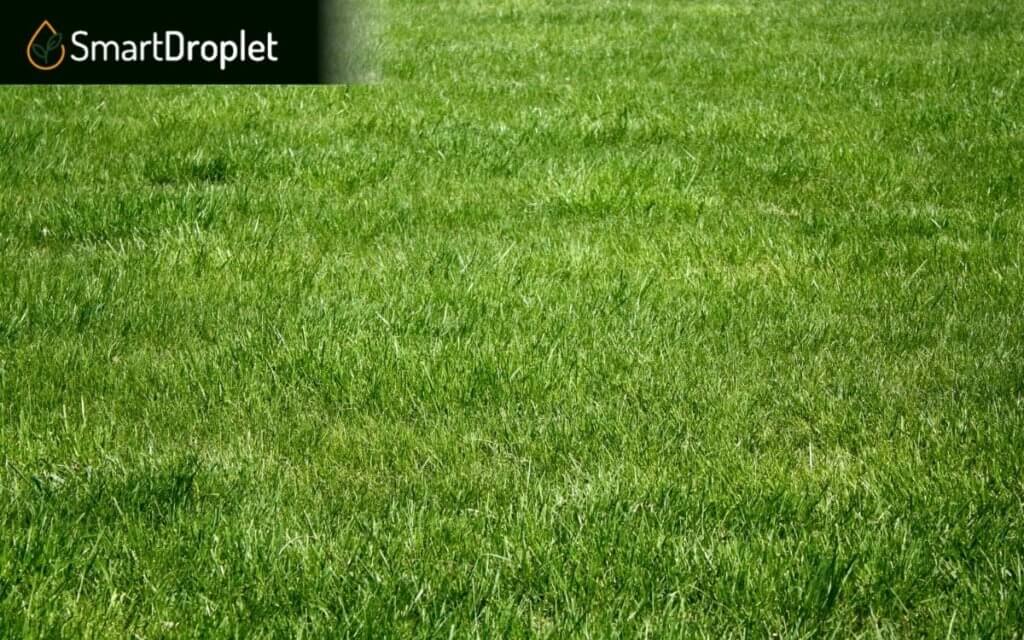
Bluegrass Sunlight Requirements
Rough bluegrass is one of the best cool-season grasses.
It is MOST AGGRESSIVE in shaded areas, especially under tall trees, due to the capabilities of cool temperature under such situations!
However, it still needs some form of sunlight! The grass seed needs about 4 hours of dappled sunlight daily to fully thrive when talking about sunlight.
Rough bluegrass is amazing on its own, but there are OTHER varieties to talk about – for example, the Kentucky Bluegrass.
If you want another option regarding the rough bluegrass, Kentucky bluegrass is your BEST BET!
Kentucky bluegrass is one of the better cool-season grasses options because the grass seed has superb shade tolerance, and it can grow well in partial shade.
However, the grass still requires a good amount of direct sunlight.
Conclusion
While there are many shade-tolerant plants, never forget the MOST SIGNIFICANT aspect of plants – they all need sunlight!
Despite shade-tolerant grass and plants being able to thrive under the shade, allowing more light to enter your lawn is never a BAD IDEA.
We hope that you learned a thing or two from this article! If this article proves helpful, consider consulting your local garden center if you want more information!
Thanks for reading, and we wish you the best in your future planting endeavors!
Frequently Asked Questions (FAQs)
If the article does not provide enough information for you, HAVE NO FEAR! Here are the most FAQs regarding the shade-tolerant grass topic!
Do Full Shade Tolerant Grass Species Exist?
When shopping for the best grass species and the best grass to grow under any shade situations, like dense shade, it is ESSENTIAL to know the conditions and adaptability of your region!
For example, grass that can tolerate shade would not thrive properly if the area is HEAVILY shaded.
That said, it is IMPOSSIBLE to find a full-shade grass seed because all plants and grass REQUIRE sunlight for photosynthesis.
If your lawn has many shade areas and trees, a great way to combat that is to open the tree canopy for sunlight to penetrate the trees for the plants to receive sunlight.
It allows the plants to grow and thrive!
How Do You Grow Grass in the Shade?
Despite the many grass seeds on the list that can grow under trees and low light conditions, it is crucial to know how to PROPERLY care for the plants.
These plants will grow and thrive to their fullest potential with proper maintenance!
Without diligent care and maintenance, any grass plants with high shade tolerance will NOT FLOURISH.
For example, these plants compete with tree roots and other growing grass for nutrients, oxygen, and water. Because of these deep roots, it cannot be easy to compete!
Keeping that in mind and understanding how to properly approach this situation will make the difference in flourishing these plants!
How Do You Make Grass Grow Better Under Shade?
Here are tips and tricks on making grass grow to its FULLEST POTENTIAL.
➔ Reduce Stress on the Grass – Minimizing foot traffic on your lawn that receives less sunlight per day will significantly reduce the stress on the grass!
➔ Increase the Mowing Height – Mowing grass higher than usual will allow more surface area on the grass blades to fully absorb the limited sunlight it will receive
➔ Treat Lawn Diseases Promptly – Fungal diseases and other diseases can easily infect plants that remain wet for long periods. Treat your plants the moment you notice any signs of disease!
➔ Seed or Overseed Each Fall – Overseeding will help your turfgrass grow much more than weeds. Grass experts HIGHLY RECOMMEND overseeding with 6-8 lbs of grass seed per 1,000 square feet for GOOD COVERAGE and great cover in low light conditions.
➔ Plant a Dense Shade Mix Grass Seed – Despite dappled sunlight conditions, one of the best ways for grass to grow in the shade is to use a shade mix grass seed!
Planting a dense shade mix grass seed will help keep your shaded areas COVERED with security!
One of the best dense shade mixes to buy is the Scotts Turf Builder Grass Seed Dense Shade Mix! It does well under trees and can function well with at least 3 hours of sunlight daily!
However, it is SIGNIFICANT to remove any weed that hinders the growth of your plants!
And most important of all, never forget to make your plants exposed to sunlight! Due to the nature of plants, sunlight is the ESSENTIAL requirement they need to function!
What Are the Best Tall and Ornamental Alternatives?
If the grass you are maintaining fails to grow or fails to fully thrive, an alternative to those is to choose to plant either tall or ornamental grasses!
The purpose for choosing these grasses is mainly for decorative purposes and to also remove any ugly spots present on your lawn.
If you have any bare spots on your lawn that you want to fix but have no other ways to repair them, planting tall or ornamental grasses is a GREAT WAY to cover those spots!
Do you want to know some of the best tall grasses to buy in the market? Here are some of the BEST ORNAMENTAL GRASSES to consider:
➔ Japanese Forest Grass
➔ Blue Grama Grass
➔ Korean Feather Reed Grass
➔ Autumn Moor Grass
➔ Fall Blooming Reed Grass
➔ Liriope
➔ Little Miss Maiden Grass
These options grow fast, are beautiful when fully flourished, and leave a great foliage coloration, making it one of the best decors for a household to have!
Not only is it great for decorating purposes, but it also serves as a great eco-friendly option because you do not need to use any tool that could potentially harm the environment!

